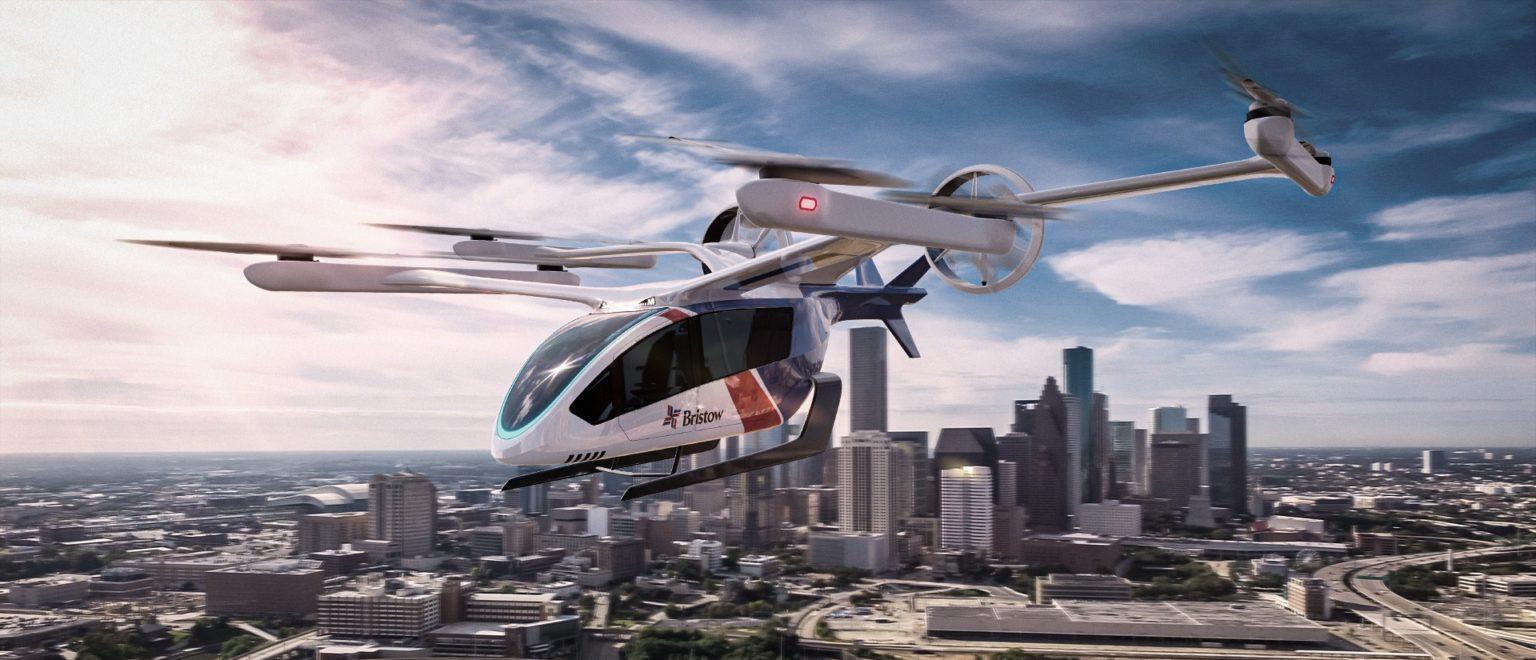
Spurred by the rapid development of electric vertical takeoff and landing (eVTOL) and hybrid-powered aircraft, the industry is poised for the coming revolution in urban and advanced air mobility.
But what impact, if any, will this new generation have on business aviation? At first glance there seems little overlap between the mostly small, slow and short-range capability of these innovative vehicles and the high flying, faster and longer-range world of the business jet.
Yet despite the stark differences, there is growing evidence that eVTOLs and an emerging subset of electric and hybrid-electric powered vertical-takeoff business aircraft will not only interact with today’s business aviation sector but could augment it, and even develop into significant new market areas.
In the near term, this effect is expected to materialize in the form of close links between eVTOL and other future FAR Part 135/AOC (air operator’s certificate) electric vehicle users and fixed base operators (FBOs). Co-located with commercial facilities at major and regional airports, FBOs provide access to ramp areas, handling and—potentially—charging facilities that current passenger terminals do not.
These links are already happening. On Feb. 18 of this year, Blade Urban Air Mobility announced an alliance with FBO Vertiport Chicago and Part 135 operator Helicopters Inc. to fly Blade passengers. As part of the deal, Blade will also work with the vertiport to support the transition to eVTOL aircraft. In September, Eviation Aircraft, developer of the all-electric Alice regional aircraft, partnered with Clay Lacy Aviation on a plan that will enable its aircraft to be charged at all Clay Lacy Aviation FBOs as part of its network of services. Eviation, which plans additional FBO agreements, has targeted 2024 for entry-into-service of the Alice.
Other elements of the eVTOL and business aviation business model are also beginning to emerge. In July, Joby Aviation announced it was partnering with JetBlue Airways and the FBO company Signature Flight Support to pursue the creation of carbon credits for commercial flights of electric and hydrogen-powered aircraft. Signature, which is introducing sustainable aviation fuel (SAF) across its network, is including electric aviation credits by expanding its ”book-and-claim” model, which enables the purchase of carbon offset credits at sites where SAF is not yet available.
The link between electric aviation and FBOs is a logical connection, says Sergio Cecutta of urban air mobility industry watcher SMG Consulting. “You’ve got to charge somewhere, and an FBO makes more sense because commercial terminals will never allow high-voltage chargers—it's just complicated. Do you want to have a high voltage next to a Boeing 777? I wouldn't want that,” he says.
Business aviation operators also see the potential for profitable synergies as the new generation of eVTOLs emerge. In Europe, regional air mobility startup Lilium has partnered with Luxemburg-based Luxaviation to provide commercial operations with its seven-seat eVTOL aircraft from 2024. Luxaviation will be responsible for regulatory approvals and managing pilots, who will train following an EASA-approved type rating concept developed by Lilium partner Lufthansa Aviation Training.
Lilium, which plans to fly the first production-conforming certification prototype of the ducted-fan Lilium Jet at the end of 2022, also aims to launch services in Florida by the end of 2024 with an initial four vertiports, expanding to a network of 14 locations across the state served by more than 100 aircraft. Lilium is also looking at other regions for U.S. networks including the Northeast, California and Texas.
Embraer’s Eve UAM Solutions has similarly partnered with helicopter operator Bristow to develop an AOC for the Brazilian company’s four-passenger eVTOL. The deal, announced in September, follows an agreement with on-demand charter broker Flapper to serve as a proof-of-concept for future eVTOL operations across South America. Eve has also announced provisional service deals with U.S.-based charter platform Blade, in addition to securing commitments from ridesharing service Halo in the U.S. and U.K., and Helisul Aviation in Brazil.
“I think it will make sense, especially to the fractional operators, to align themselves or partner with these eVTOL network operators because the whole thing about business jets is speed,” says Cecutta. “It’s cheaper than a helicopter and it brings passengers into their system. And, oh by the way, it enables them to offset their carbon footprint, because now they are using electric vehicles.”
Several companies are developing vehicles that are aimed at combining vertical takeoff and landing capability with the range and capacity of a business jet. These include U.K.-based start-up Samad Aerospace, which recently completed hover tests of its half-scale e-Starling all-electric prototype aircraft, marking a key step toward development of the planned follow-on seven-seater air taxi.
Designed for inter-city routes, the full-scale aircraft incorporates a semi-blended wing body fuselage with lift fans embedded in the wing, tilted ducted fans in the trailing edge and a tail-mounted ducted fan. The full-scale e-Starling version will have a range of 800 mi. and a cruise speed of 300 mph. Samad is targeting first deliveries in 2026.
Colorado-based XTI Aircraft is merging with holding company Xeriant to ensure funding to cover development of a prototype of the company’s TriFan 600 hybrid-eVTOL business aircraft. The aircraft is configured with a serial hybrid propulsion system comprising a GE Aviation Catalyst turbine engine driving a 1-megawatt generator, augmented by a 250-kW battery system for takeoff and climb that can be recharged in flight.
Targeted at service entry in 2025, the six-seat aircraft is designed to fly 650 nm at 300 kt. at 29,000 ft. in VTOL mode, extending to 1,200 nm with a conventional takeoff and landing.
Another vertical business jet (VBJ) concept under development is by South Africa-based Pegasus Universal Aerospace. To be tested in 2022 using two 4-meter-span (13-ft.) quarter-scale models, the VBJ is a VTOL concept with a hybrid-electric propulsion system, two turboshaft engines generating electricity to power four lift fans in the wing and two ducted fans for propulsion.
